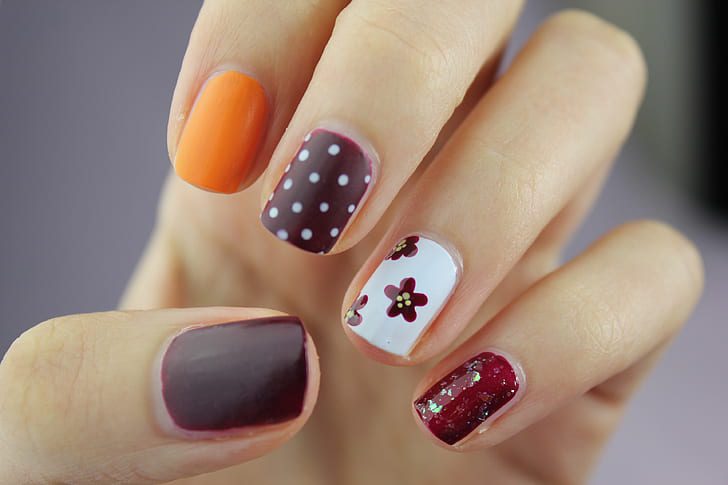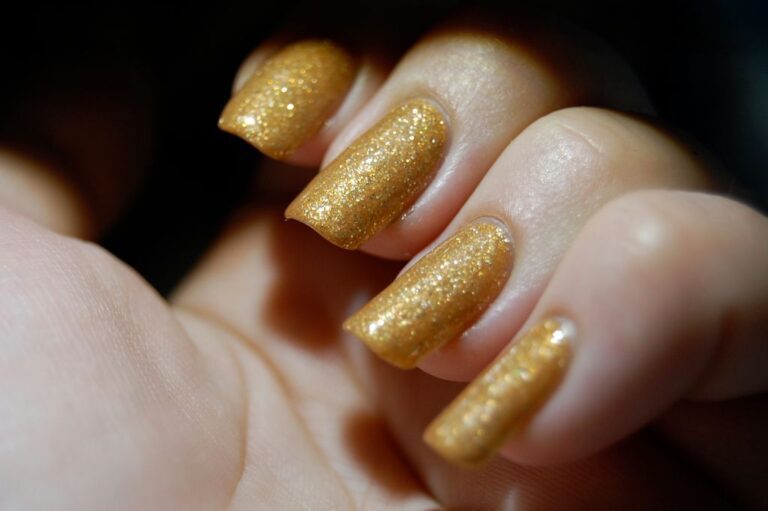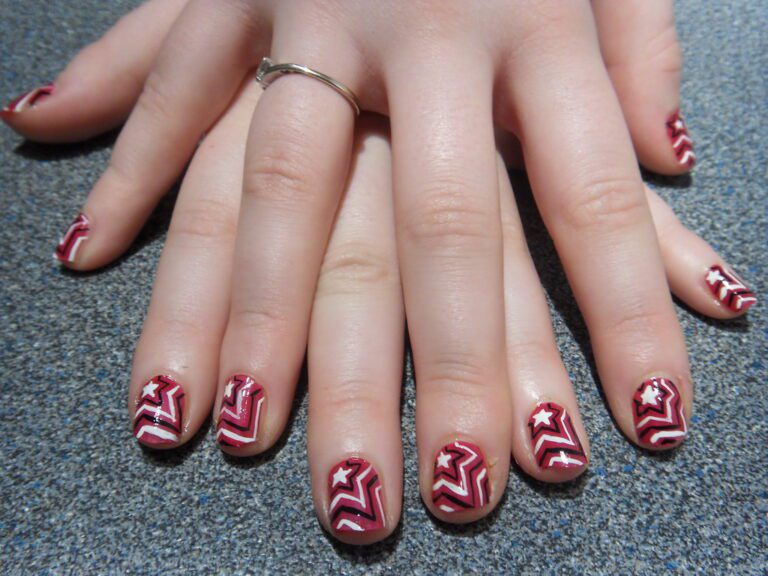“Growth Halt: Can Nails Stop Growing?”
Nails are a fascinating part of our body, and their growth can be influenced by various factors. In this article, we will explore the science behind nail growth, common myths and misconceptions, medical conditions that can impact nail growth, as well as the role of nutrition, age, hormones, and external factors. Additionally, we will discuss best practices for nail care and when it’s essential to seek professional help for nail-related concerns.
Key Takeaways
- Proper nutrition plays a crucial role in promoting healthy nail growth.
- Age-related changes can affect the speed and quality of nail growth.
- Chemical exposure and physical trauma can impede nail growth.
- Regular nail care and maintenance are essential for promoting healthy nail growth.
- Consulting a dermatologist is important if you notice any significant changes in your nail health.
Understanding Nail Growth

The Anatomy of the Nail
The human nail is a complex structure that serves not only a cosmetic function but also plays a crucial role in the tactile experience and protection of the fingertips and toes. Composed of a hard, protective protein called keratin, nails are more than just their visible part. The visible section, known as the nail plate, is just the tip of the iceberg. Beneath it lies the nail bed, the cuticle, the nail folds, the lunula, and the matrix, where nail growth originates.
Nails grow from the matrix, a tissue under the skin at the nail’s base. As new cells are produced, older ones are pushed out, compacted, and take on the hardened form we see. This growth process is continuous, with fingernails typically growing faster than toenails.
- Proper nail care is essential to maintain the health and strength of the nail structure.* Factors such as nutrition, health conditions, and even stress can influence nail growth and quality. While nails can appear to be simple, their anatomy is intricate and vital for overall hand and foot function.
The Nail Growth Cycle
The nail growth cycle is a fascinating process that reflects the overall health of an individual. Nails grow from a deep layer of living cells in the nail matrix, located at the base of the nail beneath the cuticle. As new cells are produced, older cells are pushed out, compacted, and take on the hard, protective form we recognize as the nail plate.
Nail growth is not uniform and can be influenced by various factors such as age, nutrition, and health. Typically, fingernails grow at a rate of about 3 mm per month, while toenails grow slower, at about 1 mm per month. The following list outlines the stages of the nail growth cycle:
- Initiation: The nail begins to form in the matrix.
- Proliferation: Cells multiply and start to harden.
- Keratinization: Cells fully harden and become the nail plate.
- Ejection: The nail plate is pushed forward as new cells are produced.
Tip: Consistent care and protection can help maintain a healthy nail growth cycle. Avoiding harsh chemicals and physical trauma can prevent disruptions in this cycle.
Understanding the intricacies of the nail growth cycle can help in identifying any abnormalities that may indicate underlying health issues. It’s essential to pay attention to changes in nail growth patterns as they can be early signs of medical conditions.
Factors Influencing Nail Growth
The rate at which nails grow can be affected by a myriad of factors, ranging from individual health status to daily habits. Understanding these influences can help in maintaining nail health and managing expectations regarding nail growth.
- Genetics play a pivotal role in determining the speed and strength of nail growth. Some people may naturally have faster-growing nails due to their genetic makeup.
- Age is another significant factor; as we grow older, nail growth tends to slow down.
- The health of one’s circulatory system can also impact nail growth, as nails require a steady blood flow to receive the nutrients necessary for growth.
- Lifestyle choices, such as diet and smoking, can either support or hinder nail health. A balanced diet rich in vitamins and minerals supports nail growth, while smoking can restrict blood flow and slow growth.
- Environmental factors, including exposure to chemicals and the level of manual labor one engages in, can affect the condition and growth rate of nails.
Tip: Regular moisturizing and protection from harsh chemicals can help maintain nail strength and growth. Avoiding excessive water exposure and harsh cleaning agents can also be beneficial.
Myths and Misconceptions About Nail Growth
Common Nail Growth Myths
The world of nail care is rife with myths and misconceptions that can lead to confusion about what truly affects nail growth. One such myth is the belief that nails need to breathe. In reality, nails are made of keratin and do not require air to grow. Another common fallacy is the idea that white spots on nails indicate a calcium deficiency, when they are often the result of minor trauma to the nail bed.
- Myth 1: Nails need to breathe
- Myth 2: Acetone is harmful
- Myth 3: White spots indicate calcium deficiency
- Myth 4: Chemicals damage the nail plate
- Myth 5: Frequent nail filing is bad
Each of these myths stems from a misunderstanding of nail physiology or an oversimplification of nail care practices. For instance, while acetone can be drying, it is not inherently harmful if used properly. Similarly, the use of chemicals in nail products does not necessarily damage the nail plate, and frequent filing, when done correctly, can actually promote nail health.
Tip: Always moisturize your nails after using acetone and file in one direction to prevent splitting.
Separating Fact from Fiction
When it comes to nail growth, there are several myths and misconceptions that have circulated for years. It’s important to separate fact from fiction to understand the truth about nail health. One common myth is that taking supplements can significantly impact nail growth. However, most white spots on nails do not require supplementation and are often temporary, growing out as the nails grow. Another misconception is that certain treatments are essential for promoting nail growth, but the truth is that gentle formulas and proper care play a more significant role in maintaining healthy nails. It’s crucial to be aware of these myths and focus on evidence-based practices for optimal nail health.
Medical Conditions That Can Halt Nail Growth

Fungal Infections and Nail Growth
Fungal infections are a common culprit behind disrupted nail growth. The presence of a fungal organism can invade the nail bed, leading to changes in the nail’s appearance and structure. Nails may become thickened, discolored, and brittle, which can cause them to break more easily.
Onychomycosis, the medical term for fungal nail infections, can significantly slow down or even halt nail growth. This condition is more prevalent in toenails than fingernails due to the warm, moist environment shoes provide, which is ideal for fungal growth.
Tip: Keeping feet dry and clean, and avoiding sharing nail tools can help prevent fungal nail infections.
Treatment for fungal infections typically involves antifungal medications, either topical or oral, and can take several months to clear the infection. It’s important to follow the treatment regimen as prescribed to ensure the best chance of restoring healthy nail growth.
Systemic Diseases Affecting the Nails
Systemic diseases can have a significant impact on nail health and growth. Conditions such as psoriasis, eczema, and autoimmune disorders can lead to changes in the nails, causing them to become brittle, discolored, or even detached from the nail bed. These systemic diseases often require specialized medical treatment to manage their effects on nail growth and overall nail health. It’s important to consult a healthcare professional if you suspect that a systemic disease is affecting the growth and appearance of your nails.
Nail Disorders and Growth Implications
Nail disorders can have a profound impact on the growth and health of nails. Conditions such as psoriasis, eczema, and lichen planus can cause nails to become thickened, brittle, or separated from the nail bed, known as onycholysis. In severe cases, nail growth may be significantly slowed or even halted.
While some disorders are primarily cosmetic, others may indicate deeper systemic issues. For example, yellow nail syndrome is often associated with respiratory diseases and lymphedema. It’s crucial to understand that the presence of nail abnormalities can be a sign of underlying health problems.
Tip: Regular observation of your nails can help in the early detection of disorders. Changes in color, texture, or growth patterns should prompt a consultation with a healthcare professional.
Management of nail disorders often requires a multifaceted approach, including topical treatments, oral medications, and in some cases, surgical intervention. Addressing the root cause is essential for restoring nail health and promoting normal growth.
Nutritional Impact on Nail Health

Essential Nutrients for Healthy Nails
The health and strength of our nails are greatly influenced by our intake of certain nutrients. A balanced diet rich in vitamins and minerals is essential for maintaining healthy nail growth. Here are some key nutrients that play a pivotal role:
- Biotin: Often touted as the go-to vitamin for nails, biotin supports keratin production, a fundamental protein for nail health.
- Iron: Iron deficiency can lead to brittle nails and even spoon-shaped nail deformities.
- Zinc: This mineral is crucial for cell division and growth, processes that are vital for nail development.
- Vitamin C: Necessary for collagen production, vitamin C helps maintain nail strength and integrity.
- Omega-3 Fatty Acids: These healthy fats promote nail lubrication and prevent dry, brittle nails.
Tip: Consistently including these nutrients in your diet can help avoid common nail problems such as brittleness, splitting, and slow growth.
It’s important to note that while supplements can help, obtaining these nutrients from whole food sources is preferable. Over-reliance on supplements without a balanced diet may not yield the desired improvements in nail health.
Dietary Deficiencies and Nail Growth
Dietary deficiencies can have a significant impact on nail growth and health. When the body lacks essential nutrients, it can manifest in various nail conditions, such as brittleness, discoloration, and slow growth. Addressing these deficiencies through a balanced diet or supplements is crucial for maintaining strong and healthy nails.
To illustrate the impact of dietary deficiencies, consider the following examples:
| Nutrient | Nail Condition |
|---|---|
| Iron | Brittle or Cracked Nails |
| Biotin | Weak and Peeling Nails |
| Calcium | Slow Nail Growth |
It’s important to note that these examples are not exhaustive, but they highlight the relationship between specific nutrients and nail health. Consulting a healthcare professional for personalized advice on addressing dietary deficiencies is recommended for individuals experiencing nail-related issues.
The Role of Age and Hormones in Nail Growth

How Aging Affects Nail Growth
As we age, the growth of nails tends to slow down due to changes in hormonal levels and decreased circulation. This can lead to nails becoming more brittle and developing ridges. Additionally, aging can result in a decrease in the production of essential nutrients that are crucial for nail health. It’s important to pay attention to these changes and adjust nail care routines accordingly to maintain optimal nail health and growth.
Hormonal Changes and Nail Health
Hormones play a pivotal role in the health and growth of nails. Just as they affect other parts of the body, hormonal fluctuations can lead to changes in nail strength, growth rate, and overall condition. For instance, during pregnancy, many women experience accelerated nail growth and enhanced strength due to increased levels of certain hormones.
However, not all hormonal changes are beneficial. Menopause or thyroid imbalances can slow down nail growth and make nails more brittle. It’s essential to recognize these changes and adjust nail care practices accordingly. For example:
- During periods of hormonal fluctuation, such as the menstrual cycle or pregnancy, maintaining hydration and using moisturizing nail products can be beneficial.
- In cases of hormonal deficiencies, supplements or dietary adjustments might be recommended.
Tip: Pay close attention to your nails as they can be indicators of hormonal imbalances. Subtle changes in texture or growth patterns may warrant a closer look at your hormonal health.
External Factors Affecting Nail Growth

Impact of Chemical Exposure
Chemical exposure can have a significant impact on nail health. Volatile organic compounds (VOCs), commonly found in nail products, pose potential health risks, including chronic exposure leading to adverse outcomes such as cancer. It’s important to minimize exposure to these compounds to maintain healthy nails. Additionally, excessive exposure to water and chemicals can lead to split fingernails, affecting nail integrity and growth. Proper protection and care are essential to mitigate the effects of chemical exposure on nail health.
Physical Trauma and Nail Recovery
Physical trauma to the nails can have a significant impact on their growth and appearance. Injuries such as crush injuries or repetitive trauma can lead to changes in the nail structure and growth patterns. It’s important to provide proper care and attention to the affected nails to support their recovery. In some cases, professional intervention may be necessary to address severe trauma and promote healthy nail regrowth.
When dealing with physical trauma to the nails, it’s essential to be mindful of the recovery process. Here are some key points to consider:
- Immediate Care: Clean the affected area and apply gentle pressure to stop any bleeding. Avoid covering the nail with adhesive bandages to allow for natural healing.
- Protection: Protect the injured nail from further trauma by avoiding activities that put pressure on the nail. Consider using protective coverings or splints if needed.
- Consultation: If the trauma results in persistent pain, discoloration, or abnormal nail growth, seek professional advice from a dermatologist or nail specialist.
Remember, proper care and attention after physical trauma can make a significant difference in the recovery and regrowth of the nails.
Caring for Your Nails to Promote Growth

Best Practices for Nail Care
Maintaining healthy nails is not just about aesthetics; it’s about overall nail health and growth. To ensure your nails are given the best care, consider the following best practices:
- Keep nails clean and dry to prevent fungal infections and other complications. Prolonged exposure to water can weaken nails, so it’s important to dry them thoroughly after washing.
- Regularly trim and file your nails to prevent snags and tears. Keeping nails at a manageable length helps maintain their strength.
- Moisturize your nails and cuticles regularly, especially after washing your hands or bathing. This helps keep them flexible and prevents brittleness.
- Be gentle with your cuticles; avoid cutting them and instead gently push them back during manicures.
Tip: Always use sharp, clean nail tools to minimize damage and prevent the spread of infection.
By incorporating these practices into your routine, you can help promote healthy nail growth and prevent common nail problems.
Treatments to Encourage Nail Growth
To foster healthy nail growth, a combination of external treatments and internal nutrition is often recommended. Biotin, also known as Vitamin H, is widely recognized for its role in promoting nail strength and growth. A daily intake of 30 to 40 micrograms, either through diet or supplements, can make a noticeable difference.
Topical treatments can also be beneficial. Products containing soy protein or other fortifying agents help to eliminate brittleness and protect against splitting. Regular use of cuticle oils and nail strengtheners can create a protective barrier, enhancing the nails’ resilience.
Tip: Consistency is key when using nail treatments. Apply products as directed, usually daily, to achieve the best results.
Remember, while these treatments can aid in nail growth, they should be part of a broader nail care routine that includes proper hygiene and protection from physical trauma.
When to Seek Professional Help

Signs of Serious Nail Conditions
At this stage, it is crucial to be vigilant about any changes in the nails that persist or worsen over time. Pale or white nails can be a sign of anemia, liver disease, malnutrition, or poor circulation, while yellow nails may indicate a fungal infection. If you notice any of these signs, it is advisable to consult a dermatologist for a thorough evaluation. Additionally, pay attention to any nail shape changes, discoloration, or pitting, as these could be symptoms of underlying conditions. Remember, early detection and intervention are key to maintaining nail health and preventing serious complications.
Consulting a Dermatologist for Nail Issues
If you notice persistent changes in the appearance or texture of your nails, it’s advisable to consult a dermatologist for a thorough evaluation. A dermatologist can provide expert guidance on identifying underlying issues and recommending appropriate treatments. Additionally, they can offer personalized advice on maintaining nail health and preventing future concerns. Seeking professional help is crucial for addressing any serious nail conditions and ensuring optimal nail care.
If you’re struggling with complex nail art designs or experiencing challenges with nail care, it may be time to seek professional help. At NAILinspire.com, we offer the ultimate online nail art design library to inspire and guide you. Our expert resources and tutorials cover a wide range of nail art techniques and tips, ensuring that you can achieve the perfect manicure every time. Whether you’re a beginner or a seasoned nail artist, our comprehensive collection of nail art resources is designed to elevate your skills and creativity. Visit NAILinspire.com today and take the first step towards mastering the art of nail design.
Frequently Asked Questions
Do nails really stop growing?
No, nails do not stop growing completely. However, the growth rate may slow down with age and certain health conditions.
Can nail polish affect nail growth?
Nail polish itself does not affect nail growth, but improper application and removal can weaken the nails, leading to breakage and the appearance of slower growth.
How can I promote nail growth naturally?
Maintaining a balanced diet rich in essential nutrients, keeping nails moisturized, and avoiding excessive exposure to harsh chemicals can help promote natural nail growth.
Are there any medical treatments for promoting nail growth?
In some cases, dermatologists may recommend topical treatments or supplements to support nail health and growth. However, these should be used under professional guidance.
What are the signs of a serious nail condition?
Signs such as persistent discoloration, changes in nail texture, and pain or discomfort in the nails may indicate underlying nail health issues that require professional evaluation.
Is it normal for nail growth to vary between individuals?
Yes, nail growth rates can vary among individuals due to genetic factors, age, overall health, and lifestyle habits.






